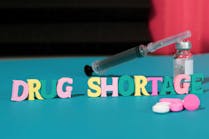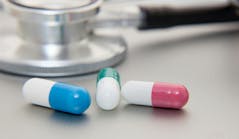Has pandemic poked holes in reusable vs. disposable product debate?
One of the more controversial issues lurking within the Sterile Processing realm as far back as a decade or two ago involved the reuse of single-use devices (SUDs) with the industry cleverly considering certain disposables as “reposables” regardless of Food and Drug Administration (FDA) classification.
Provider proponents justified the practice by claiming the “disposable” label helped manufacturers pad their profits from healthier sales even though manufacturers declared the disposable products they made included components and raw materials that likely could not withstand a rigorous cleaning, disinfection and/or sterilization process, which would render those single-use-only products fragile, unsafe and a potential danger to patients if used more than once.
For the last decade at least, the concept of SUDs and reposables seemed to ebb along with the concept of flashing or immediate-use sterilization – carried out on a desperate, last-resort, need-to only basis.
Early last year, as healthcare organizations began to anticipate product demand spikes due to a rapidly spreading regional epidemic in East Asia that exploded within months to a full-blown, world-wide pandemic, the last resort re-opened for business for a select number of products.
Nothing like surging demand to empty shelves, clog backorder channels, magnify shortages and amplify tensions with supply chain around the access to and availability of personal protective equipment (PPE) and other related products.
To make ends meet, desperate times called for desperate measures, such that a number of providers and suppliers figured out creative ways to encourage and implement the reprocessing of specific SUDs, such as N95 respirators, for example.
This leads to a fundamental procedural question worth asking: How has the provider and supplier response to the pandemic in terms of reusing SUDs – no matter how limited or specialized – changed opinions about the practice even as the specter of deadlier crises looms?
Bobbing and weaving
Melinda “Mindy” Benedict, CIC, CFER, Global Senior Manager, Infection Prevention, Olympus Corporation of the Americas, acknowledges the apparent mixed messaging but urges caution before changing behaviors.
“COVID-19 has created an unprecedented need for reprocessing SUDs, such as N95 respirators,” Benedict noted. “The supply of these protective facemasks has not met the ongoing demand for these essential safety tools for healthcare workers, and emergency use authorization (EUA) was provided by the FDA to reprocess these masks, provided that the reprocessor conducts cleaning and sterilization/disinfection of the SUDs in an appropriate manner – per FDA guidelines for decontaminating respirators.
“Temporary allowances that may have been made to enable the continuation of patient care and meet care demands could be misinterpreted as permanent solutions,” Benedict warned. “The current EUA is a temporary solution to the pandemic-related problem of personal protective equipment shortages. Single-use devices are engineered and manufactured to be used one time only. While some single-use devices, like the N95 facemask, are considered low-risk devices, other single-use devices are classified as high-risk as reprocessing these high-risk devices could present a significant risk for infection unless the original equipment manufacturer (OEM) has data supporting that the device can be reprocessed and used multiple times.”
Still, she emphasizes the increased legal liability on part of providers and service companies that carry out reuse practices.
“Firms and hospitals that are reprocessing SUDs are considered by the FDA to be manufacturers and as such must comply with all of the following statutory and regulatory requirements: Reprocessors of SUDs should be able to demonstrate:
1. That the device can be adequately cleaned and disinfected or sterilized
2. That the physical characteristics or quality of the device will not be adversely affected by these processes
3. That the device continues to comply with applicable FDA requirements.”
But navigating through the winding and seemingly circuitous justification for reusing certain SUDs during a crisis when few other options exist leads to frustration and peril.
“As a nurse and as an Environment of Care/Infection Prevention Director for many years, there was a strong focus on reusable vs. disposable supplies,” acknowledged Janet Pate, JD,“With the development of reprocessing facilities for some of these items it became even more confusing,” Pate admitted. “It was difficult to educate everyone on which items could be reprocessed by these facilities and why it was acceptable. After all, everyone had been educated that disposable/single-use items meant just that, the item should be disposed of after use. With the onset of the pandemic, suddenly it is acceptable to reuse many of these items. Although most people understand the impact of the pandemic regarding the reuse of supplies, in the future the Infection Preventionists and other regulatory experts will now be faced with changing back to the practices before the pandemic. This definitely will be challenging, and perhaps research should be performed to evaluate if the change in practices related to certain products should remain even after the pandemic.”
“It was quite a process to get people to understand the significance of the policy,” said Sargent, Principal, Sargent Healthcare Strategies. “There are many today who do not know it exists. This will create much more confusion. We need direction from the FDA, and then manufacturers need to update their instructions-for-use (IFUs) to include reuse of single-use devices. Otherwise, leaving the choice to each facility may affect the safety of [the patients] on whom the reprocessed product was used. I also know firsthand how difficult it has been to find PPE that meets the approval of Infection Preventionists, clinicians, human resources, finance and supply chain.”
Still, the pandemic reaction remains an effective reminder of the fundamental tenets behind reuse, product integrity and sterility, according to Stephen Kovach, CFER, Educator Emeritus, Healthmark Industries.
“For me, it brings to light what I refer to as ‘The Science of Reprocessing,’” he noted. “Staff who work in the medical device reprocessing department [know] how important of a department we are. We are no longer just the department that ‘cleans utensils.’ We know thousands of medical devices, and we have more than only steam sterilization technology at our fingertips.”
The pandemic illuminates this context.
“[Sterile Processing] staff today understand the importance of what they do and the impact they have on patient outcomes,” Kovach said. “This pandemic has shown how vital we are to any facility, not just to prepare something for surgery. When you read the peer-reviewed literature, you will notice that members of the department are part of those papers, so in my view, it has helped change in the C-suite the perception of the people in the basement. They have and will be vital to the facility’s survival.
“The shortage has caused all departments to work together and see how they each dovetail into each other, and with science, they can make changes,” he continued. “It raised each department’s awareness within its facility, making everybody stronger, and then the patient is the winner. So from something sour, we made something sweet.”
Hits and misses
Few deny that Supply Chain took a hit when the pandemic caused demand to outpace availability of products and under pressure may have missed opportunities to change processes on the fly.
But K. Mark Wiencek, Ph.D., Lead Microbiologist, Contec Inc., points to the pandemic-driven supply shortages as introducing some “new dynamics into the classic debate” of reusables vs. disposables.
“In some cases, healthcare associates switched from whatever type they were using before the pandemic to any option they could procure,” Wiencek recalled. “The switch from the preferred disposables to reusable options usually was associated with PPE. However, there have been situations, like with cleaning textiles (e.g., mop pads, wipers), where the opposite occurred – personnel switched to domestically produced disposables due to issues with off-shore supply chains for reusable items.
“Regardless of the drivers, reprocessing textiles can be a challenging process, even for products that are designed to be re-cleaned or re-laundered and possibly re-sterilized,” he continued. “It is important that healthcare institutions properly audit the reprocessing operations, whether they are conducted internally or through an outside contractor. Improper laundering can lead to damage that can compromise the performance of the item or increase the risk of cross-contamination if hazardous microbes, chemicals or drugs are left on the items after processing.”
When examining the notion of reusable vs. disposable supplies – and more narrowly, whether to disinfect disposable supplies – much of the debate centers on four factors, according to Don Lowe, Spokesperson, ProTEC-USA.
Cost: “Material used to make reusable gowns is in very tight demand; therefore, not only making it extremely difficult to source but driving up the cost of goods to a premium that is substantially higher than disposable counterparts,” Lowe indicated. “Much of the material itself is imported, leading the countries of manufacture to commonly prohibit export of said goods.
“Disposable gowns can be procured more readily and typically at a lower cost versus that of reusable alternatives,” he continued. “Utilizing domestic manufacturers of disposable gowns allows healthcare organizations to shorten supply chains and reduce exposure for potential delivery disruptions.”
Maintenance: “Reusable gowns carry a life span,” he said. “This raises several challenges: How can one be sure the exact number of washes that a gown has gone through? How can one be sure that the safeguards and protections built into the gown don’t start to diminish after 10, five or even two washes? Furthermore, the scorecard is left in the hands of laundry operators, opening the possibility of human error on a wash count of gowns. Great care must be taken as part of any gown maintenance program.”
Risk: “Picking up from maintenance, there is an inherent risk associated with using a reusable gown that while cleaned, can only be donned with the assumption that it was washed as per manufacturer specifications and that it has not reached its recommended end-of-use state,” he noted. “On-shored supply chains are a factor here too, as there is inherent value in saving time and reducing the potential to received tainted orders.”
Confidence: “Healthcare organizations can feel a sense of assurance knowing that the disposable gowns that they’ve procured for their team will provide superior performance and protection as they work with patients in high-contamination risk situations,” he added.
Lowe recognizes the challenges the topic of reusing disposable gowns brings.
“It’s critical that hospital administrators implement and follow all FDA guidelines and procedures when looking to extend the use of reusable and disposable gowns,” he said. “There should be strict oversight to ensure that the safety of medical professionals and patients are never compromised.”
For the record, the FDA does not condone the reuse of a variety of products and, in fact, advises against the reuse of disposable gowns. But the federal agency does make an allowance for certain types of respirators.
Still, the pandemic taught healthcare organizations some valuable lessons. Four key wake-up calls should have been learned so far, according to Agoston.
1. “Even with an effective and efficient supply chain, it can be quickly disrupted and depleted,” he said. “For this reason, back-up supplies and alternative products are a must. In addition, having dependable manufacturing capability and logistic support are a national requirement for critical medical supplies.
2. “Disposable items have a place, but if there is a safe and effective reusable device, this should be preferred or at least held in reserve to hedge against shortages,” he noted. “Environmentally, reusable devices tend to have a much lower impact vs. disposable supplies. Think of all the single-use water bottles that now litter the earth.
3. “The biggest challenge that the pandemic created for supply chains is how they balance carrying inventory to avoid shortages versus ‘just-in-time inventory management systems’ that rely on matching inventory to demand,” he indicated. “Significant spikes in demand caused by a pandemic or other catastrophe are not fully accounted for. Without dependable manufacturing capabilities and logistics, there is great risk of future shortages.
4. “The opportunity for industry is in the creation of local manufacturing capability for medical devices, supplies and pharmaceuticals and in the development of reusable supplies that could be used in place of disposable items,” he concluded.
See Also: Experts urge healthcare to plan now for next pandemic, crisis
For more information visit the following links:
- Coronavirus (COVID-19) Update: FDA Reissues Emergency Use Authorizations Revising Which Types of Respirators Can Be Decontaminated for Reuse | FDA https://www.fda.gov/news-events/press-announcements/coronavirus-covid-19-update-fda-reissues-emergency-use-authorizations-revising-which-types
- Investigating Decontamination and Reuse of Respirators in Public Health Emergencies | FDA https://www.fda.gov/emergency-preparedness-and-response/mcm-regulatory-science/investigating-decontamination-and-reuse-respirators-public-health-emergencies
- FAQs on Shortages of Surgical Masks and Gowns During the COVID-19 Pandemic | FDA https://www.fda.gov/medical-devices/personal-protective-equipment-infection-control/faqs-shortages-surgical-masks-and-gowns-during-covid-19-pandemic
- Surgical Mask and Gown Conservation Strategies - Letter to Health Care Providers | FDA https://www.fda.gov/medical-devices/letters-health-care-providers/surgical-mask-and-gown-conservation-strategies-letter-health-care-providers
- Questions About Personal Protective Equipment (PPE) | FDA https://www.fda.gov/medical-devices/personal-protective-equipment-infection-control/questions-about-personal-protective-equipment-ppe

Rick Dana Barlow | Senior Editor
Rick Dana Barlow is Senior Editor for Healthcare Purchasing News, an Endeavor Business Media publication. He can be reached at [email protected].











